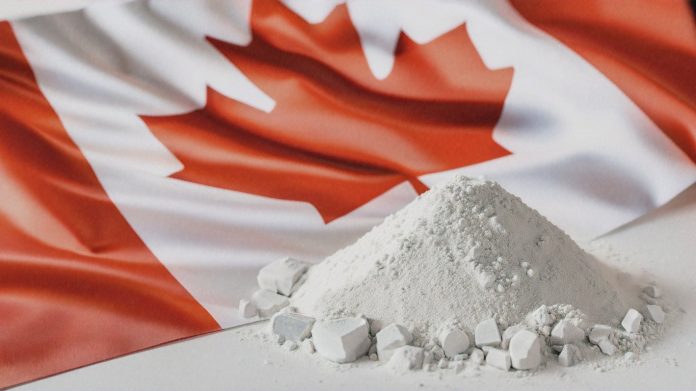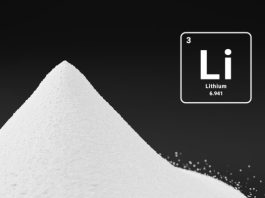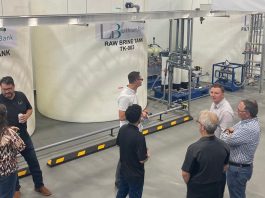Kevin Piepgrass, Chief Operating Officer at LithiumBank Resources, explores the company’s lithium projects in Western Canada and discusses its recent adoption of continuous DLE technology.
Lithiumbank resources corp. (TSX-V: LBNK) (OTCQX: LBNKF) is a publicly traded lithium brine company focused on developing and de-risking its two flagship projects, Boardwalk and Park Place, in Western Canada. Together, these assets are estimated to have the largest subsurface lithium brine resources in North America. The company is currently conducting large-scale pilot testing of a licensed Direct Lithium Extraction (DLE) technology at its facility in Calgary.
In January 2024, the company released an updated Preliminary Economic Assessment (PEA) for its Boardwalk project, based on a proposed 34,005 tonnes per annum production of battery-grade lithium hydroxide monohydrate (LHM). The significant difference from the initial PEA released in May 2023 was the incorporation of newly licensed continuous Direct Lithium Extraction (DLE) technology from G2L Greenview Resources Inc. (G2L). The G2L technology has numerous advantages over the DLE process applied in the original PEA, including reducing the operating cost by 34% and increasing the lithium recovery to 98%.
LithiumBank’s Park Place project consists of 1,404,558 acres of contiguous brine-hosted mineral licenses and is situated approximately 50km south of the company’s Boardwalk lithium brine project.
In June 2024, LithiumBank announced an initial National Instrument 43-101 – Standards of Disclosure for Mineral Projects lithium-brine inferred mineral resource estimate of 21,697,000 tonnes LCE between two formations contained within the license boundaries with a combined average grade of 80.2 mg/L lithium. The total estimate is the combination of 10,076,000 tonnes of inferred lithium carbonate equivalent (LCE) at a grade of 79.4mg per litre of lithium within the Leduc Formation aquifer and 11,620,000 tonnes of inferred LCE at 80.9mg per litre of lithium within the Swan Hills Formation aquifer underlying Park Place.
Editor Maddie Hall spoke to Chief Operating Officer Kevin Piepgrass to learn more about the projects and the company’s future plans.
What are the key aspects of LithiumBank’s two flagship projects?
LithiumBank’s two flagship projects, Park Place and Boardwalk, are based in Alberta, Canada, which we see as having significant advantages when it comes to developing large-scale resource projects.
The established infrastructure in Alberta, originally built for oil production, is a valuable asset for our projects, with well pads, paved roads, water and gas facilities already in place. Additionally, the Alberta government has been very supportive of the emerging lithium industry. It has allowed for a streamlined permitting process like that for oil and gas projects due to the similarity of our extraction process and project footprint. This makes the permitting process much quicker compared to open-pit lithium mining.
LithiumBank’s flagship projects are of a globally significant scale and together rank as the largest known lithium brine resources in North America. They are 100% owned by the company and held on 100% crown mineral licenses. The projects do not overlap with any significant carbon sequestration projects and would not interfere with the important and emerging carbon sequestration industry. These aspects become increasingly important when entering the development stages of a project as it presents fewer challenges.
The Boardwalk and Park Place present a rare opportunity in the mineral resource industry where an exceptionally large resource can potentially be put into production while maintaining lower water usage, lower CO2 emissions, and a smaller surface footprint than any traditional lithium extraction method used in the world today. LithiumBank has put considerable effort toward keeping water usage and CO2 emissions to a minimum.
The geology of the projects is the star of the show.
The Devonian-aged carbonate formations are up to 500m thick in places with excellent permeability and porosity and are considered confined aquifers. A confined aquifer means the brine is trapped and is not mixing with other brine/water from other formations, keeping the overall brine chemistry relatively unchanged over the resource area. This brine consistency and large scale are what allow the project to be such a viable candidate for our direct lithium extraction.
LithiumBank recently announced the Park Place NI 43-101 resource estimate as the largest in North America. Can you please tell us the significance of this resource?
In July, we announced the discovery of a substantial lithium resource totalling 21.7 million tonnes of lithium carbonate equivalent, with an average grade of 80.2 mg per litre. This marks the largest reported inferred lithium resource in North America and the highest-grade lithium resource in Alberta.
The significance of this discovery lies not only in its size but also in its potential for long-term development and production of lithium. Because of its size, ideal location, and favourable geology, it provides multiple options for where to begin, how to progress, and how to scale up.
We collaborated with Schlumberger (SLB), renowned global subsurface experts and the world’s largest oil and gas service and technology provider, to model the subsurface reservoir. We combined two formations – the Swan Hills and the Leduc- both from the Devonian age and carbonate buildups. Together, they offer over 350m of porous and permeable reservoir rock with consistent brine chemistry and lithium grades over the sampled area of the resource.
Mineral processing in any industry is challenging, so anytime you can have a consistent feed brine of a significant amount over a long period of time, in the case of the Boardwalk PEA, 20 years, you make the mineral extraction that much easier.
You announced an updated PEA for the Boardwalk Project earlier this year. What are the most exciting findings from this report?
The test results from the G2L DLE technology are what triggered the company to do an updated PEA. While keeping the front end, like the wells and pipelines to the proposed plant, the same, the improvements to the DLE technology significantly enhanced the economics of the Boardwalk project.
Of note was the operational expenditures (OpEx) being reduced by approximately 34% to $4,588 per tonne of lithium hydroxide (LHM). This reduction was largely due to the use of lower-cost reagents used in the DLE process and the overall process itself being more efficient and using fewer reagents and ion exchange media. Not to mention the ability to recovery a large percentage of the reagents in the downstream process.
The recovery of lithium was also improved by 8.5% by using the G2L DLE technology, bringing the overall recovery to 98%. This enhanced recovery makes a significant impact on the economy as it brings an additional 8.5% LHM to market.
These improvements had a positive effect on the net present value (NPV), which increased to $3.7bn pre-tax, and the earnings before interest, taxes, depreciation, and amortisation (EBITDA), which reached $750 million.
Can you elaborate on G2L technology and its advantages over alternate Direct Lithium Extraction processes?
Beyond just the test work results from G2L, a big part of LithiumBank acquiring the exclusive license (in Alberta and Saskatchewan) to this DLE technology was because this technology is currently being used at a commercial scale for other metals. The G2L system utilises continuous cross-current ion exchange, which offers key benefits in recovery rate and enhanced impurity rejection in the initial stages. It has proven to be successful on a commercial scale.
Test results showed we were able to achieve a high brine concentration of over 3,200 mg per litre of lithium and recovered 98% of the lithium from the DLE. This is an increase in grade of approximately 46 times, resulting in a reduction of approximately 46 times the volume of eluate to further process downstream. We have found that ion exchange, in general, will yield higher recovery and a higher-grade eluate for brines, but using the G2L process of continuous DLE (cDLE) increases the efficiency that much more.
The company recently sold its Estevan Saskatchewan Project. Can you elaborate on this decision?
Our mission at LithiumBank is straightforward: We acquire high-quality, large-scale assets, consolidate, develop, and derisk them, and then transfer them to developers. We believe that development companies possess the strongest skillset to elevate these projects to the next level, given their experience and access to capital.
How has effective management influenced previous achievements and increased shareholder value creation?
Our entire management team and board of directors are actively involved in the company. With a significant 40% ownership by insiders, friends and family, there is a personal vested interest in its success. Our Executive Chairman, Paul Matysek, boasts hands-on experience, leading the development of assets from exploration to production stages and successfully selling them to major entities.
Even more impressively, each project he has sold is either in construction or production. As a team, we recognise the value of these de-risked assets and believe in our ability to follow this successful business model to place them in the hands of developers who can expedite their development.
As LithiumBank’s Alberta projects advance into the next stages of development, what can we hope to expect from the rest of 2024?
LithiumBank is currently very active, having recently opened our 10,000-litre-per-day DLE pilot plant for use over the next 12-18 months. The pilot plant is a result of the G2L engineering team and their over 30 years of experience in ion exchange. The pilot plant was designed and constructed over a ten-year period and is now operational in our facility in Calgary. Bulk brine samples have been obtained from Park Place and Boardwalk to keep the plant running.
The company has recently completed drilling the entire Leduc formation at Boardwalk and will be gathering additional information on subsurface data in an effort to increase our confidence in our mineral resource. Simultaneously, we will continue to progress the Park Place asset, gathering additional information, piloting, attempting to acquire additional wells, and collaborating with SLB and Hatch on both projects to bring them up to the level where developing companies can understand and derive value from them.
Please note, this article will also appear in the 19th edition of our quarterly publication.









